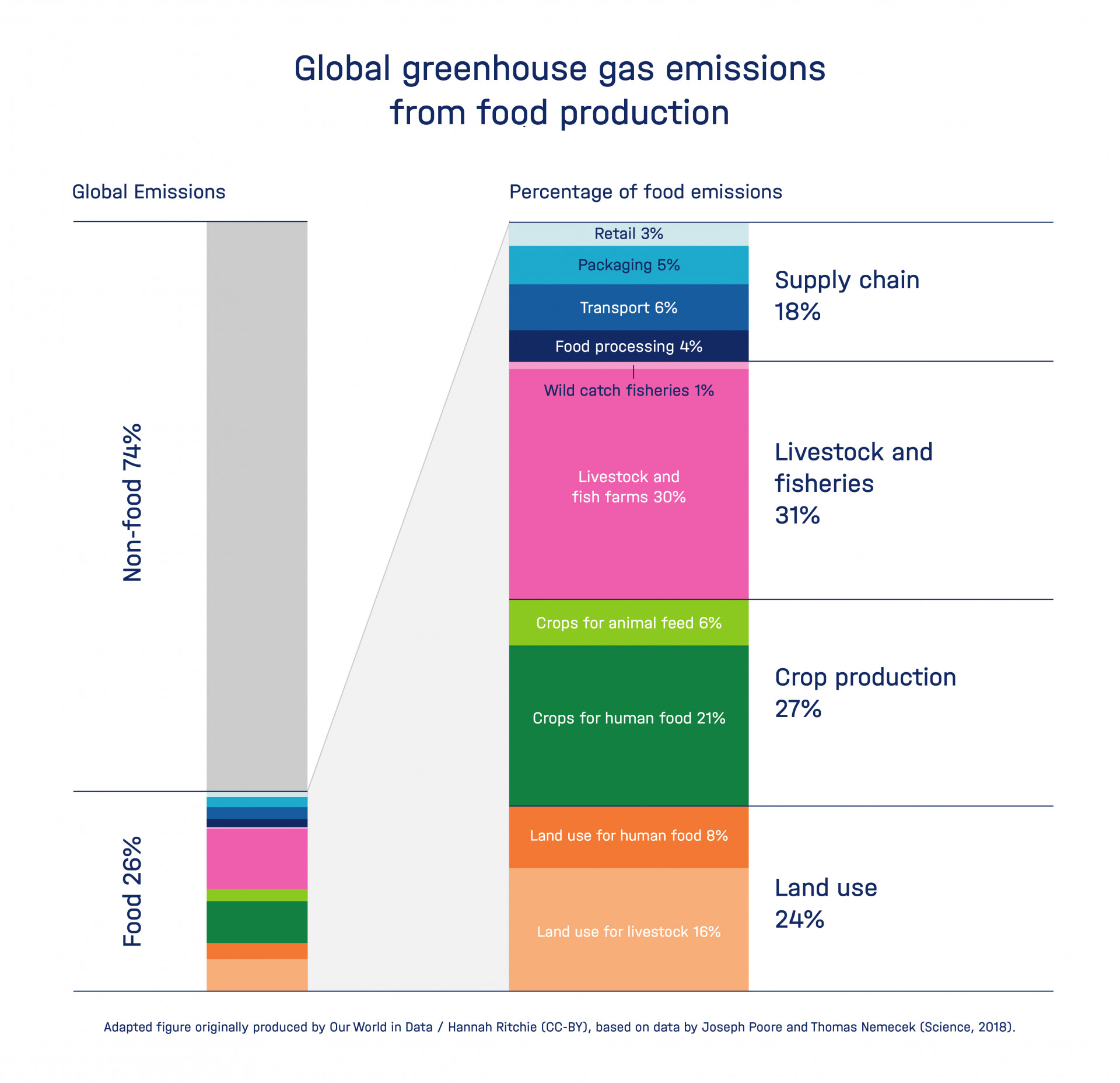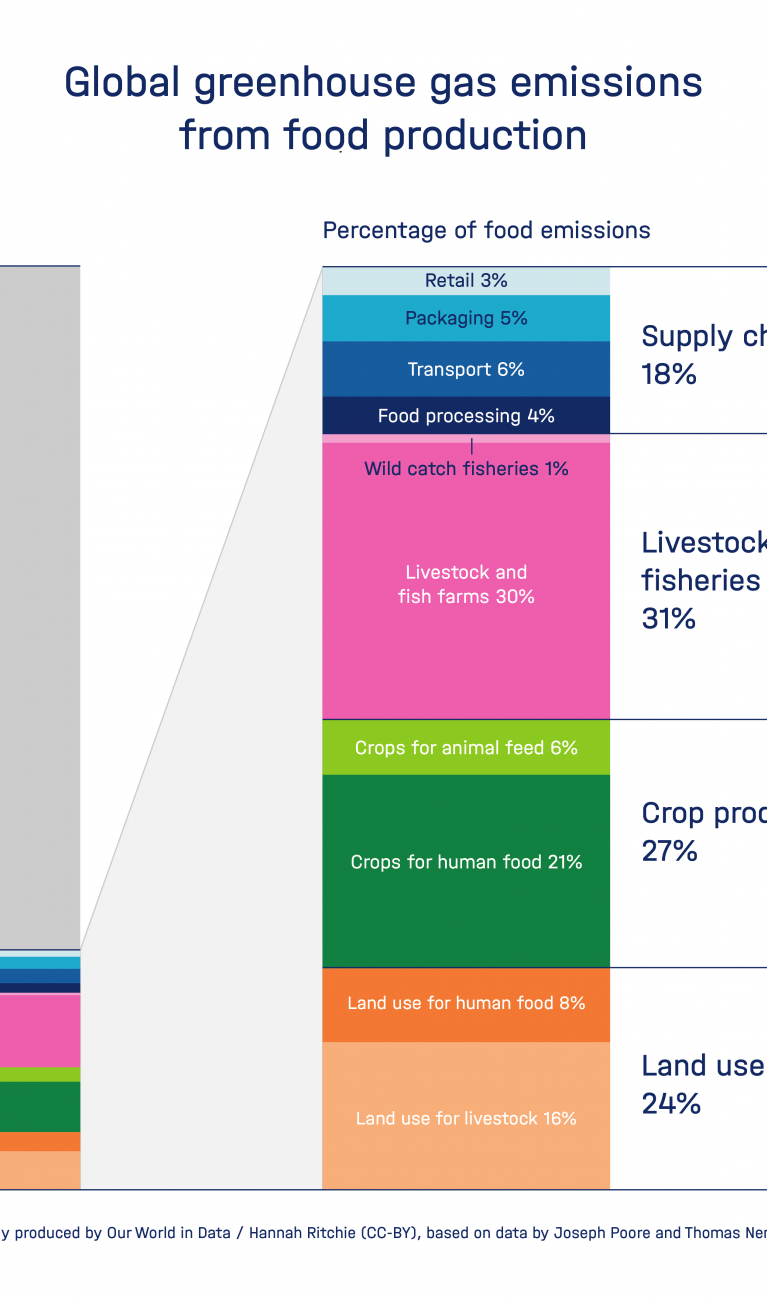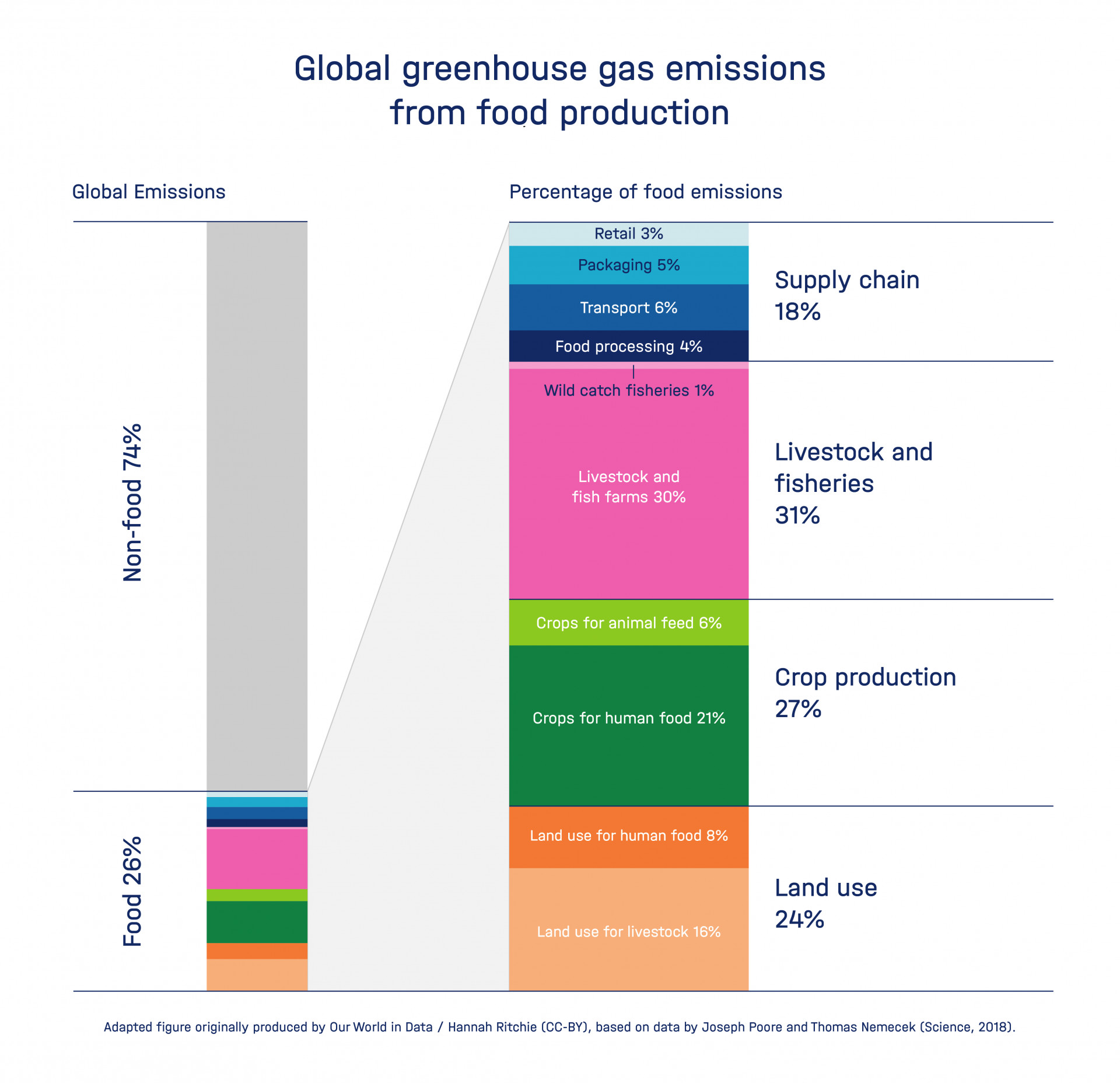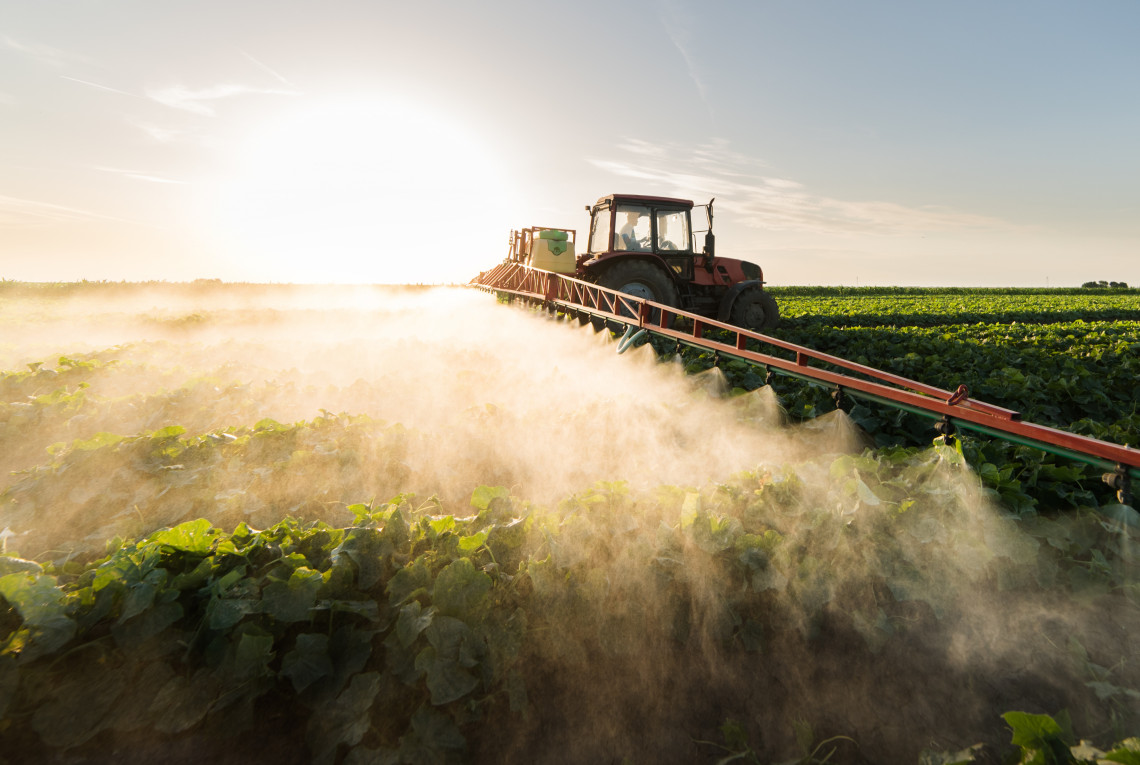For the climate: Avoiding excessive food waste


Food losses and food waste cause up to 10 percent of global human-induced greenhouse gas emissions. We could avoid a substantial portion of that by setting binding reduction targets and raising awareness of the problem. The benefits for the climate would be huge.
When another jar of jam goes moldy at home and ends up in the trash or when we send back an unfinished meal at the restaurant, it’s usually not a good feeling. It’s cause for a guilty conscience, and rightly so. According to German government statistics, every year about 11 million tons of food is thrown away in Germany. The WWF even estimates 18 million tons – out of total food consumption of about 55 million tons. It is estimated that half of all food waste could be avoided, while more than 800 million people worldwide are undernourished.
Food waste causes billions of tons of greenhouse gases each year
The Food and Agriculture Organization of the United Nations (FAO) estimates that about 4.4 billion tons of greenhouse gases are released through food waste every year. If food waste were a country, it would be the world’s third-largest producer of greenhouse gases after China and the United States. According to the IPCC’s 2019 Special Report on Climate Change and Land, global food loss and waste amount to 8 to 10 percent of anthropogenic greenhouse gas emissions. For comparison, aviation is responsible for 3.5 percent of emissions.
of anthropogenic greenhouse gas emissions
are caused by food waste
How can this happen? “To understand the climate effects of food waste, we have to look at the food system as a whole,” says Prajal Pradhan, Senior Scientist at the Potsdam Institute for Climate Impact Research (PIK). “For example, valuable forests are cut down to make way for food production, the nitrogen fertilizer used in farming releases harmful nitrous oxide, and methane escapes from the flooded fields where rice is cultivated. Huge amounts of methane and nitrous oxide are released by livestock in the production of animal-source food such as meat, milk, and eggs. Transporting, storing, processing and packaging food produces further large quantities of greenhouse gases.”


All told, the food production system is responsible for a third of worldwide greenhouse gas emissions. In turn, a third of global food production ends up in the trash. It’s important to know that the farther along the supply chain that food waste occurs, the bigger the carbon footprint of that waste is. For example, a tomato that rots during harvesting has a low carbon footprint, but that same tomato processed into tomato sauce and packaged for sale by a retailer has a very large footprint. Throw away food? Please don’t!
More than half of food waste occurs in private households
Experts make a distinction between food loss and food waste. Losses occur before food reaches consumers, for example because of inefficient harvesting, pest infestations, or poor storage. Waste occurs when food reaches consumers but is discarded instead of being bought and/or eaten.

According to a German government survey, consumers in private households were responsible for 59 percent of food waste in Germany in 2020. On average, each person throws away about 78 kilos of food every year. Restaurants and cafeterias account for 17 percent of the waste, processing for 15 percent, and retail for 7 percent.
It had previously been assumed that food losses in the highly efficient agricultural sector in industrialized countries were minor. But a comprehensive study by the WWF shows that these losses in Europe are much higher than thought. Based on the WWF study, Environmental Action Germany (Deutsche Umwelthilfe, DUH) estimates food losses in Germany’s agriculture sector at about 17 million tons of additional food waste per year. The reason: Millions of animals die in their stalls and tons of fruit and vegetables don’t make it to retailers because of cosmetic flaws.
Binding rules, disposal bans, and outreach
As part of its contribution to the United Nations' Sustainable Development Goals, the German government has committed to cutting per capita food waste in half by 2030 for both retailers and consumers; the Federal Ministry of Food and Agriculture is drawing up the appropriate measures. It’s not yet clear when a draft law will be announced.
From the DUH’s point of view, the main policy priority is to set binding waste reduction targets along the entire supply chain, from the production and processing companies to the supermarkets and consumers. “The government has to set binding requirements for waste avoidance and establish mechanisms for enforcing them,” says Elisa Kollenda, an expert on food and agriculture at the DUH. “Voluntary commitments of the kind sought by the previous government are not enough.” Kollenda also advocates an immediate ban on food disposal by retailers and other businesses along the supply chain, saying that supermarkets and canteens, for example, should be legally required to donate food that is unsold but still edible to social organizations before disposing of it. Such regulations are already in effect in some countries, such as France.
And what about consumers? “There’s a lot more work to be done in terms of outreach and education. We consumers are at the end of the supply chain. We determine the demand for food, so our domestic food waste has the biggest carbon and environmental footprint,” says Marina Tsoumpa, who works at the Institute for Advanced Sustainability Studies (IASS) in Potsdam and is writing her master’s thesis on food waste in private households in Germany.
“Simply avoiding food waste by consumers would be enough to reduce Germany’s greenhouse gas emissions by one percent, which corresponds to about eight million tons of CO2 per year. That would be such an important step toward climate neutrality,” says Tsoumpa. By analyzing 34 households, she found that providing simple instructions on how to handle food carefully – from buying to storing to preparing it – and explaining the effects of waste have a positive impact on the amount of food that ends up in the trash.
Tips and tricks to counter food waste
The German aid agency Welthungerhilfe has many good tips for consumers. The DUH combines political and private efforts and provides additional information on its food waste summary page.
Dr. Pradhan’s main recommendation is to eat less meat. Nearly 70 percent of all greenhouse gases released during food production can be attributed to animal products. Huge expanses of arable land are needed to grow animal feed, and fertilizing it releases nitrous oxide. The digestive tracts of livestock produce methane, which is a further climate hazard. In Pradhan’s view, bringing consumers into closer contact with food production, for example through urban gardening, would be an important step toward making them value food more. “When people see how much work it is to grow vegetables, they’ll also be thankful to harvest and eat a crooked cucumber now and then,” he says.


